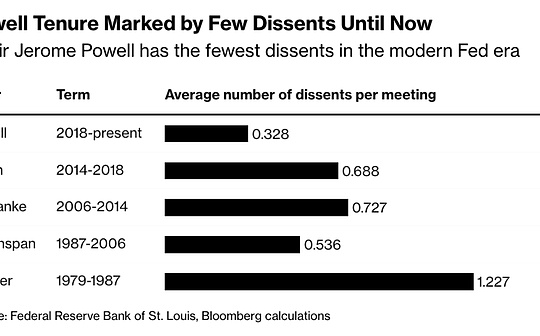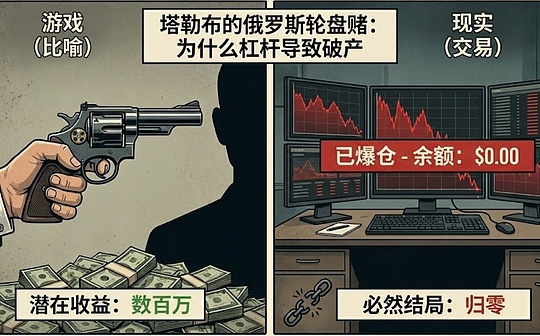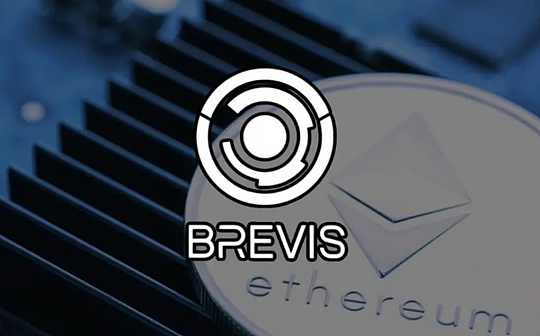
Ye Zhen, Wall Street Insights
Many core allies of Federal Reserve Chairman Powell have spoken out intensively in recent days, supporting another interest rate cut in December, believing that the risks to the labor market have exceeded inflation. This series of statements has rapidly increased the market’s easing expectations for the Federal Reserve.
The latest comments came from San Francisco Fed President Mary Daly and Fed Governor Christopher Waller.Daly warned on Monday that the labor market faced the risk of a “non-linear” deterioration, while Waller also publicly supported a rate cut in December.Their views echoed the dovish stance last week by New York Fed President John Williams, who stressed the need to avoid “unnecessary risks” to the job market.
Affected by this, the market reacted quickly.Traders in the interest rate swaps market now see the probability of a quarter-point rate cut by the Fed at its December meeting having surged to 80% from about 40% a week ago..U.S. Treasuries rose for a third straight session, with yields on the more policy-sensitive two-year note falling sharply lower over the past two sessions, while yields on the 10-year note fell to their lowest this month.
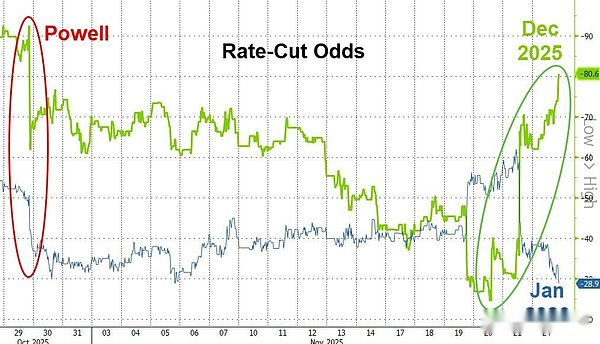
Complicating the prospect of this decision is that the key October and November employment reports will not be available when the Fed meets on December 10 due to delays in data release caused by the government shutdown.This forces officials to make judgments with incomplete information, increasing decision-making uncertainty.
Powell’s allies speak out intensively, and job market risks become the focus
Some of the Fed’s most influential officials have turned the focus of the policy debate to the labor market.
San Francisco Fed President Mary Daly made it clear in an interview with the media that she supports cutting interest rates because managing a sudden deterioration in the job market is more difficult than dealing with a rebound in inflation.She warned that the labor market had become “very fragile” and faced the risk of “non-linear change”.It is worth noting that Daly’s views rarely deviate from Powell’s position in public, according to Nick Timiraos of “New Fed News Service”.
Daly’s views echoed comments made by New York Fed President John Williams last week.As the Fed’s “third-in-command”, Williams said on Friday that as the labor market cools, downside risks to employment have increased, while upward risks to inflation have eased, so the Fed still has room to cut interest rates further in the “near term.”
Likewise,Federal Reserve Governor Christopher Waller also expressed support for cutting interest rates in December and adopting more flexible policies starting in 2026.
These officials believe that although inflation is still hovering near 3%, above the 2% target, the cost pressure from tariffs is milder than expected.Williams noted that there was no evidence that the tariffs triggered secondary effects or other price spillovers.Therefore, preventing the risk of a sharp weakening of the labor market has become a priority.
Disagreement within the committee became apparent, making the December decision a “test of judgment”
Despite the growing dovish tone, divisions within the Fed board remain significant.Boston Fed President Susan Collins expressed a more cautious view.She believes that the current “moderate or moderately tight” policy stance remains appropriate as resilient demand is likely to continue to put upward pressure on inflation.She said she would be cautious at the next meeting.
Regarding internal dissent, Daly believes this reflects real-world uncertainty rather than “groupthink.”She described next month’s decision-making as a “test of judgment” weighing the “risks of inaction” against the “risks of action.”She said she believed the risk of action (cutting interest rates) was low, while the risk of inaction was higher.
When asked whether cutting interest rates too early would limit future policy space, Daly responded directly that the Fed should not tie its hands because of this.She stressed that the Fed should retain its options whether further interest rate cuts or hikes are needed in the future.Against this backdrop, Chairman Powell will play a key role in reconciling internal differences at the December 9-10 meeting.
The market reacted quickly, and bets on interest rate cuts increased significantly.
Driven by dovish comments from Fed officials, financial markets quickly repriced the policy path.According to Bloomberg, overnight index swap (OIS) contract rates related to the December meeting have fallen sharply, and current market pricing reflects that the probability of a 25 basis point interest rate cut is as high as 80%.
The U.S. Treasury market reacted positively.The benchmark 10-year Treasury bond yield fell 3 basis points to 4.03%, hitting a new low this month..Andrew Brenner, vice chairman of Natalliance Securities, wrote in a note that despite the absence of key employment data, “investors took comfort from the fact that senior Fed members still want to ease policy in December.”
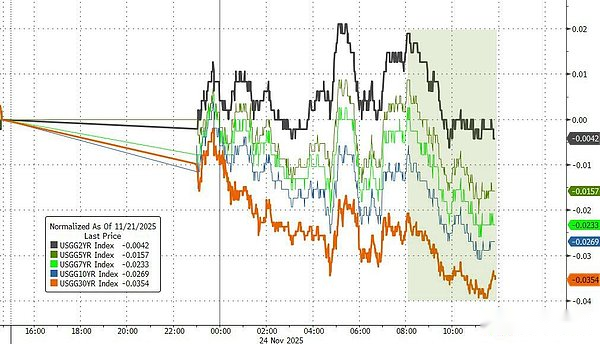
In addition to expectations of interest rate cuts, some technical factors also provided support for the bond market.According to Bloomberg, the market expects this Friday’s monthly index rebalancing to drive large funds to buy long-dated bonds.Meanwhile, demand for Monday’s $69 billion two-year Treasury note auction was strong, with the bid-to-bid ratio at the highest in three months.
John Canavan, chief economist at Oxford Economics, noted that “improving tone in the front-end yield curve over the past few sessions” helped smooth the auction.There will also be auctions of $70 billion of five-year and $44 billion of seven-year Treasury notes this week.

